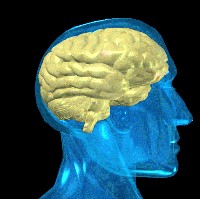A research team from Yale University in New Haven, Connecticut and University of Texas in Austin developed a simulation of schizophrenia using a computer network model. Their findings appear in the April issue of the journal Biological Psychiatry (paid subscription required).
The researchers used a virtual computer model called a neural network to simulate the excessive release of dopamine in the brain. They found that the system recalled memories in a manner resembling symptoms of schizophrenia.
The hypothesis tested in the research was that dopamine encodes the importance or salience of experience. “When there’s too much dopamine,” says computer science grad student Uli Grasemann, “it leads to exaggerated salience, and the brain ends up learning from things that it shouldn’t be learning from.”
For the research, the team used a neural network — a computer model simulating biological neural processes — in Austin called DISCERN, with the ability to learn natural language. DISCERN was originally designed for reading, paraphrasing, and answering questions about stereotypical (script-based) stories.
In this study, DISCERN simulated the processing of language as the result of eight different types of neurological dysfunction. Ralph Hoffman, professor of psychiatry at the Yale School of Medicine, compared the simulation results to his findings from studies of human schizophrenics.
Grasemann and computer science professor Risto Miikkulainen, who developed DISCERN, taught the system a series of simple stories, which were assimilated into DISCERN’s memory. DISCERN stores the information in much the same way as the human brain: not as distinct units, but as statistical relationships of words, sentences, scripts and stories.
Neural networks require repeated inputs — in as many as thousands of iterations — to enable learning, from which the system makes the desired adjustments, i.e. learning and some forgetting occurs. In the research, the team compared this normal process to what they call hyperlearning that simulates an excessive release of dopamine.
In this hyperlearning or schizophrenic state, the system learned the new stories, but did not forget as much as the in the normal state. Graseman and Miikkulainen found as a result of hyperlearning, DISCERN began producing language abnormalities that suggest schizophrenia.
The researchers report that DISCERN also began putting itself at the center of fantastical and delusional stories that incorporated elements from other stories it had been told to recall, including claims of responsibility for a terrorist bombing. DISCERN likewise replied to some requests for a specific memory with a jumble of dissociated sentences, abrupt digressions, and constant leaps from the first- to the third-person and back again.
* * *


 RSS - Posts
RSS - Posts
[…] Read more: Neural Network Simulates Human Schizophrenia Symptoms […]